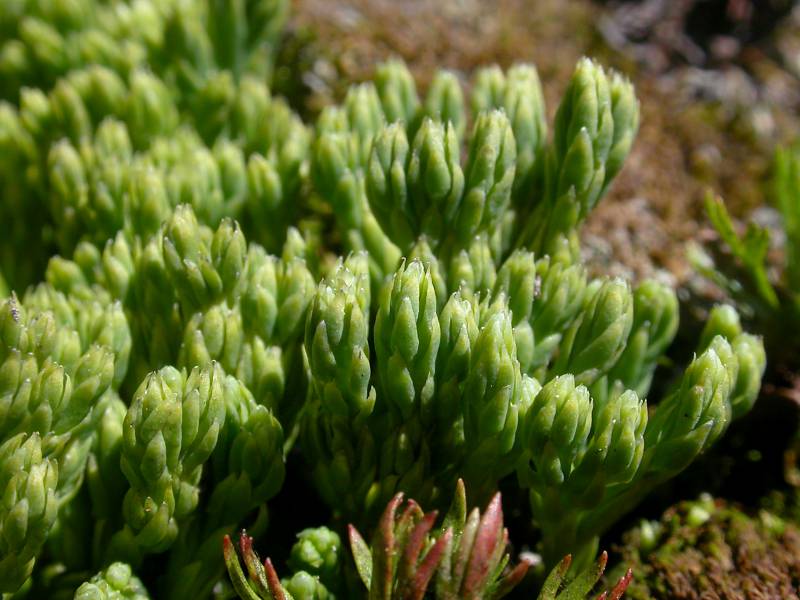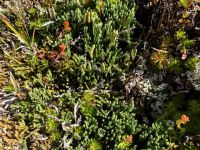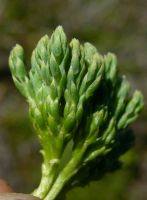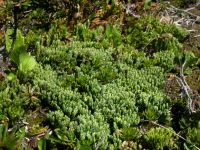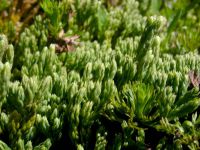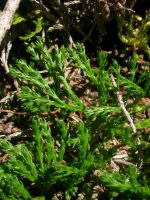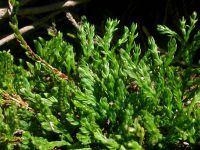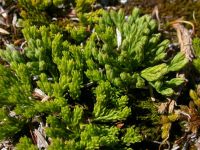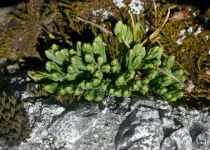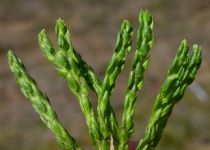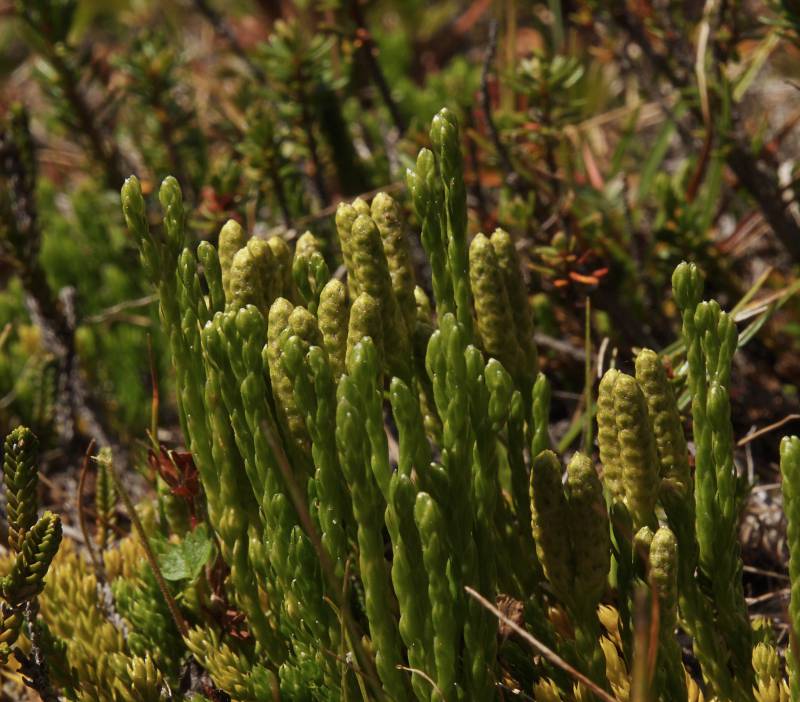
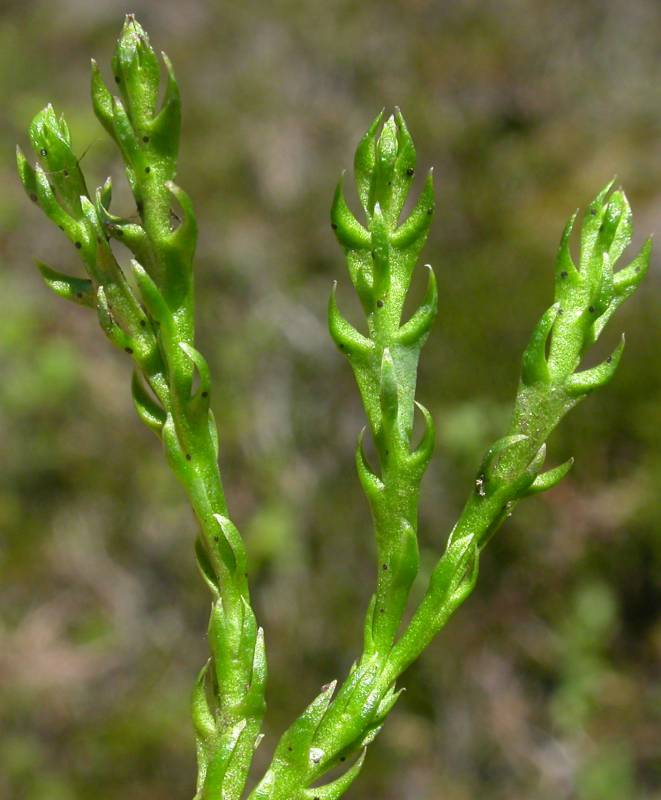
Distribution: Occurring in the Olympic Mountains and Cascades Range in Washington; Alaska to northern Washington, east to northern Idaho, northwest Montana, and Quebec; circumboreal.
Habitat: Rocky slopes, dry heath meadows, and open conifer forests at high elevations. In Washington, often found associated with Phyllodoce, Cassiope, and Vaccinium in dry heath soils.
Origin: Native
Growth Duration: Perennial
Conservation Status: Not of concern
Perennial herb, forming dense low mats with creeping horizontal stems and short, branched, erect stems to 14cm tall; stems and leaves blue-green (dark green in shaded stems).
4-ranked (opposite), short and scale-like; dimorphic in shape, the two leaves on the side of the stem curved towards the bottom of the stem, the upper leaves lanceolate and appressed forward along the stem, and the lower leaves trowel shaped (with a narrow base and a flattened flaring blade) and pointing forward along stem.
Stroboli (spore cones) solitary at branch tips, light green to tawny, 5-30mm long.
The 4-ranked dimorphic leaves with the lower trowel-shaped leaf readily distinguish this species from our other Lycopodium species. L. sitchense is similar in appearance, but has uniformly shaped leaves in whorls of 5-6 and a green to yellow-green color cast. See also notes under L. alpinum X sitchense.
In Washington, L. alpinum is rather uncommon, apparently restricted to the North Cascades and Pasayten region. It is uncertain how far south its range extends in the Cascades; however, it is likely to show up as far south as Mt. Rainier. More collections would be helpful. Hybrids between L. alpinum and L. sitchense sometimes occur where the two parent species grow together and are known as far south as Mt. Rainier and the Cascades of Oregon (where L. alpinum is not known).
Publication: Preslia. 47: 107. 1975.
PNW Herbaria: Specimen records of Diphasiastrum alpinum in the Consortium of Pacific Northwest Herbaria database
WA Flora Checklist: Diphasiastrum alpinum checklist entry
OregonFlora: Diphasiastrum alpinum information
E-Flora BC: Diphasiastrum alpinum atlas page
CalPhotos: Diphasiastrum alpinum photos

